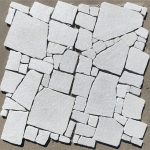Introduction
Cultured stone, also known as manufactured stone or faux stone, has gained immense popularity in the construction and design industries for its aesthetic appeal and versatility. With a wide range of patterns and textures available, cultured stone offers a cost-effective and durable alternative to natural stone. In this article, we will delve into the world of cultured stone patterns, exploring the various options available and the ways in which they can enhance the beauty of any space.
History of Cultured Stone
Cultured stone has a rich history that dates back to the mid-20th century when it was first developed as a lightweight and more affordable alternative to natural stone. The manufacturing process involves using molds to recreate the look and feel of natural stone, resulting in a product that closely resembles the real thing. Over the years, advancements in technology have allowed for greater customization and a wider variety of patterns and textures to choose from.
Types of Cultured Stone Patterns
One of the key advantages of cultured stone is the wide range of patterns and textures available. Whether you're looking for a rustic, traditional look or a more modern and sleek design, there is a cultured stone pattern to suit every style. Some popular patterns include:
1. Stacked Stone: Stacked stone patterns feature stones that are stacked on top of each other, creating a rugged and organic look. This pattern is commonly used in rustic and traditional settings, adding a touch of warmth and character to any space.
2. Fieldstone: Fieldstone patterns mimic the look of stones found in a natural field or meadow. This pattern is ideal for creating a more casual and relaxed atmosphere, making it a popular choice for outdoor spaces such as patios and gardens.
3. River Rock: River rock patterns replicate the smooth and rounded stones typically found in riverbeds. This pattern adds a unique and natural element to any space, making it a popular choice for accent walls and fireplace surrounds.
4. Brick: Brick patterns offer a classic and timeless look that can enhance both traditional and contemporary designs. With a variety of colors and textures available, brick cultured stone can be used to create a focal point or accent wall in any room.
5. Limestone: Limestone patterns emulate the soft and elegant appearance of natural limestone. This pattern is perfect for adding a touch of sophistication to a space, making it an ideal choice for formal settings such as entryways and dining rooms.

Benefits of Cultured Stone Patterns
There are numerous benefits to using cultured stone patterns in your design projects. Some of the key advantages include:
1. Cost-Effective: Cultured stone is typically more affordable than natural stone, making it a cost-effective option for homeowners and builders looking to achieve the look of stone without breaking the bank.
2. Lightweight: Cultured stone is much lighter than natural stone, making it easier to transport and install. This can result in lower labor costs and a quicker installation process.
3. Durability: Cultured stone is highly durable and resistant to weathering, making it an ideal choice for both interior and exterior applications. It is also low maintenance and does not require sealing or special care.
4. Versatility: With a wide range of patterns and textures available, cultured stone can be used in a variety of design styles and settings. Whether you're looking for a rustic, traditional look or a more modern and sleek design, there is a cultured stone pattern to suit your needs.
5. Eco-Friendly: Cultured stone is typically made from natural materials and can be recycled at the end of its lifespan, making it an environmentally friendly choice for sustainable design projects.
Tips for Using Cultured Stone Patterns
When incorporating cultured stone patterns into your design projects, there are a few key tips to keep in mind:
1. Consider the Style: Choose a cultured stone pattern that complements the overall style of your space. Whether you're going for a rustic, traditional look or a more contemporary design, select a pattern that enhances the aesthetic you're trying to achieve.
2. Mix and Match: Don't be afraid to mix and match different cultured stone patterns to create a unique and personalized look. Combining textures and colors can add depth and visual interest to your space.
3. Use Accents: Cultured stone patterns can be used as accents to highlight specific areas of a room, such as fireplace surrounds, feature walls, or entryways. By incorporating cultured stone in strategic locations, you can create focal points that draw the eye and add character to the space.
4. Consider Lighting: Lighting plays a crucial role in highlighting the beauty of cultured stone patterns. Consider using uplighting or wall sconces to illuminate the texture and depth of the stone, creating a warm and inviting ambiance.
5. Maintenance: While cultured stone is low maintenance compared to natural stone, it is still important to follow manufacturer guidelines for cleaning and care. Regular dusting and occasional washing with a mild detergent can help preserve the beauty of the stone for years to come.
Ledge stone for custom home building offer a versatile and cost-effective way to enhance the beauty of any space. With a wide range of patterns and textures available, there is a cultured stone pattern to suit every style and design preference. Whether you're looking to create a rustic, traditional look or a more modern and sleek design, cultured stone can help you achieve your desired aesthetic with ease. By understanding the benefits of cultured stone patterns and following some key tips for incorporating them into your design projects, you can create a stunning and inviting space that will stand the test of time.
